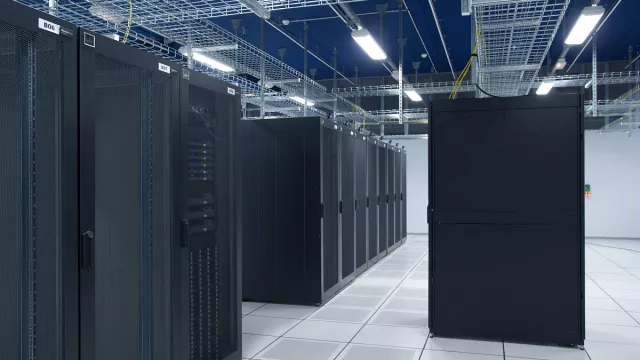CNES’s Data Processing Centre (DPC) houses a suite of platforms and services dedicated to developing and executing compute-intensive and big data processing algorithms. It is available to engineers and research scientists working on space projects in which CNES is involved.
Key information
| Mission | Provide resources and services for scientific computing, hosting and space data processing. A comprehensive offering for compute-intensive processing and data exploitation. |
|---|---|
| Domain | Cross-functional |
| Start date | Created in 1994 |
| Partners | Engineers and research scientists working on space projects |
| Where | CNES |
| Lifetime | Indefinite |
| Status | In operation |
Key figures
- 16,000+ processing cores
- 11 Pb of high-performance storage
- Data lake object storage for space mission data: 35 Pb on disk and 35 Pb on tape
- 100,000 litres of water in cooling system
Key milestones
- 2023: New supercomputer for TREX platform
- 2022: Data lake for storage and distribution of space mission data
- 2014: First launches of Sentinel satellites leading to significant increase in data volumes
- 2013: Water cooling
- 2002: Air cooling
- 1994: Freon gas cooling
- 1994: New CNES Data Processing Centre inaugurated in Toulouse
- 1 March 1966: First CNES Data Processing Centre inaugurated in Bretigny-sur-Orge
Project in brief
CNES has been in the business of compute-intensive science data processing for several decades now. Initially focused on complex physical modelling (for example to devise complex mechanical parts), the agency’s Data Processing Centre (DPC) today devotes most of its time to analysing and transforming data.
CNES supports projects being pursued by users or in house, or with partners outside the agency (for example, hosting their data processing and scientific research). This may involve operational tasks for a ground segment processing a space project’s payload data, but most of the agency’s activities concern upstream research and development or downstream data exploitation.
The DPC comprises a high-performance computing (HPC) platform with more than 16,000 processing cores and 11 petabytes of high-performance storage space shared between more than a thousand users and operational projects like SWOT, Theia and CFOSat.
Working alongside this platform are two science data storage departments:
- The STAF data transfer and archiving department, CNES’s “memory” tasked with preserving data and algorithms from past, present and future missions.
- The data lake used to store, disseminate and exploit data from space missions (Sentinel satellites, SWOT), which currently offers 35 Pb of disk space and an additional 35 Pb of storage capacity.
More than 1,200 users have already connected to the TREX supercomputer in 2024, mostly CNES personnel and industry and academic partners. Users have access to a suite of software pre-installed and configured for the computing platform, as well as to software development services for configuration management and continuous integration of their code. They can also ask for personalized support from a team charged with facilitating use of the DPC’s services, from help with accessing resources right through to code assessment and optimization, as well as promoting best practice in distributed processing and access to data or support for using software and services.
The DPC can be accessed from outside CNES, either through a command line SSH session or via the Datalabs dedicated interface supporting sharing of software environments for national and international partnerships.
CNES’s role
The Data Processing Centre is managed by CNES, which also provides support to projects using its resources.
Contacts
Contact
E-mail: L-SIS-poleHPC at cnes.fr


